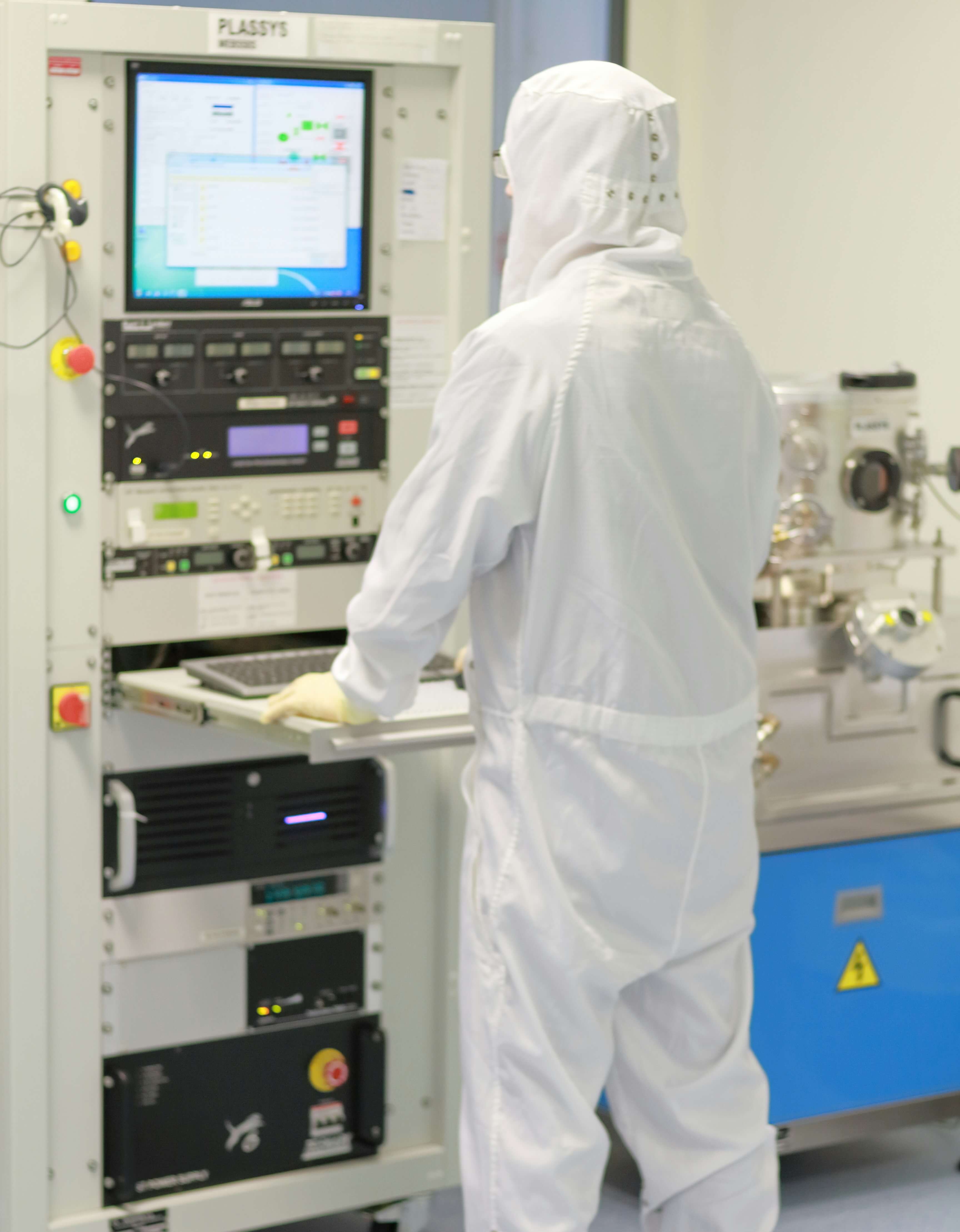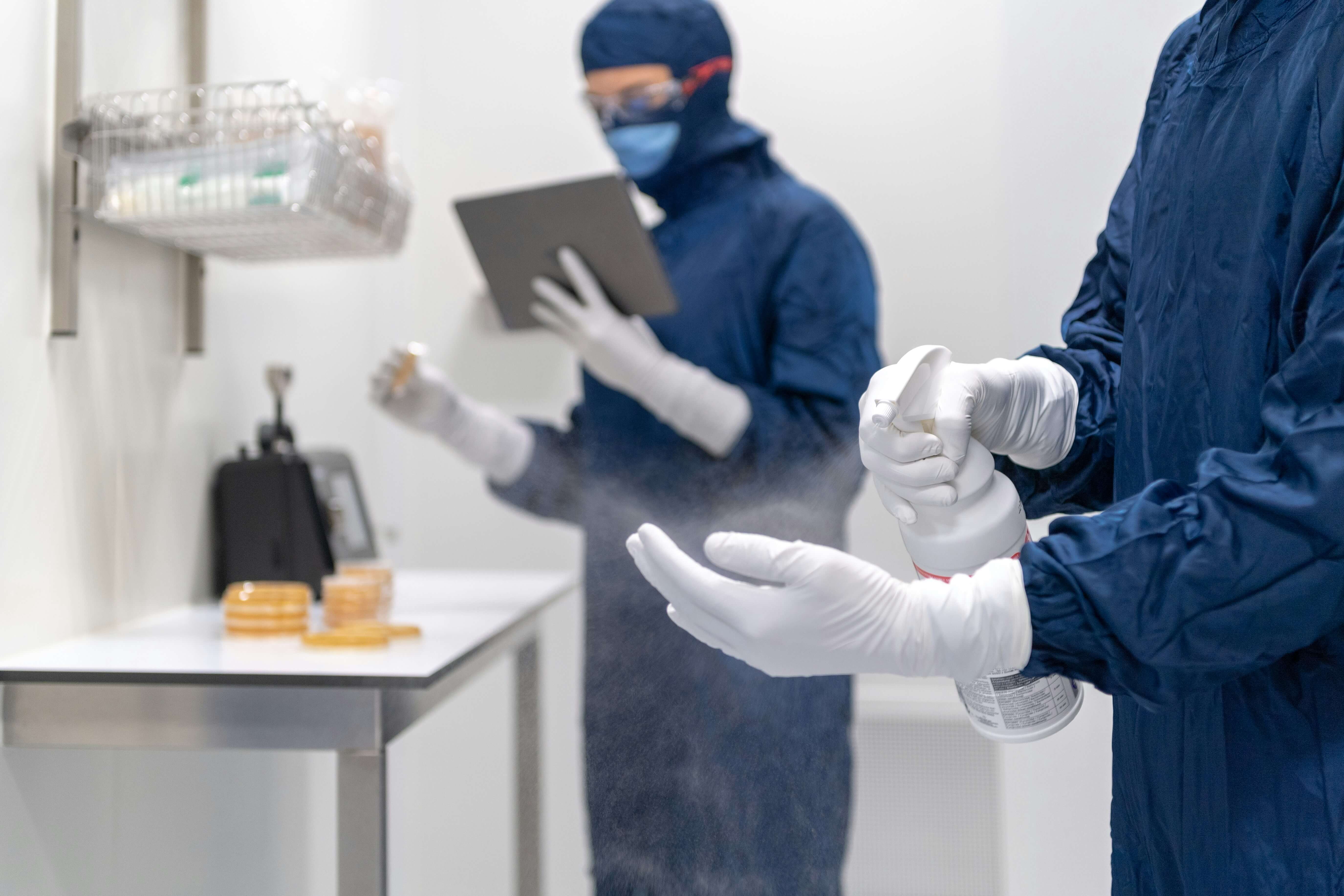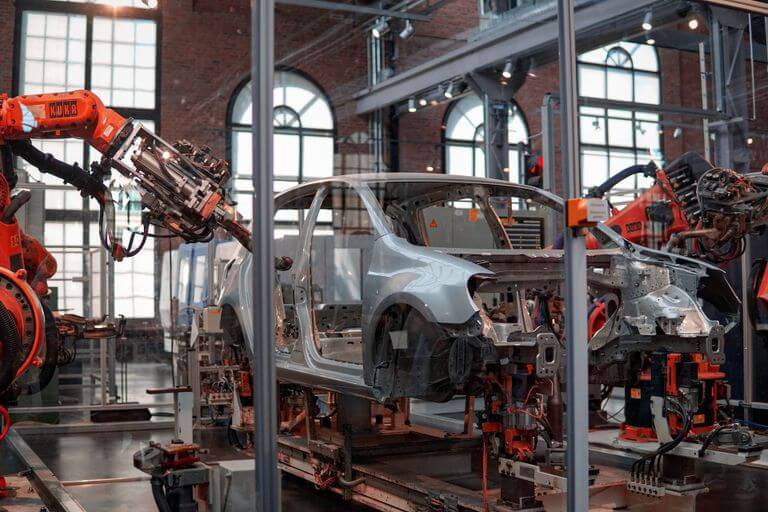Cleanroom Manufacturing of Thermoformed Plastic Parts – High Hygiene Standards
Cleanroom manufacturing of thermoformed plastic parts plays a crucial role in industries where stringent sterility requirements are essential. Learn more in this article.

Sarah Guaglianone
2. Juni 2025

Contents
What is Cleanroom Manufacturing?

Cleanroom manufacturing, also known as controlled environment production or cleanroom technology, enables the production of high-quality, customized components used in sensitive industries such as medical technology, electronics, and aerospace.
The primary goal of cleanroom manufacturing is to prevent contamination of products by airborne particles. A cleanroom is a highly controlled environment designed to maintain an extremely low concentration of airborne contaminants that are often invisible to the naked eye.
What is a Cleanroom?
A cleanroom is a specially designed space that is continuously monitored and regulated to ensure the highest level of purity and precision in production. Cleanroom manufacturing follows strict standards for air quality, particle concentration, and environmental conditions.
What are the Requirements for a Cleanroom?
A critical aspect of cleanroom manufacturing for thermoformed plastic parts is the use of specialized materials. These materials must meet the stringent requirements of the thermoforming process while also complying with cleanroom purity standards. Some requirements include:
- The use of low-particle-emission plastics
- Special coatings or treatments to minimize contamination
- Strict adherence to hygiene protocols
The Thermoforming Process in Cleanroom Manufacturing

Thermoforming is a process in which plastic sheets or films are heated and shaped into three-dimensional forms. In a cleanroom environment, this process is conducted under controlled conditions to prevent contamination of the final plastic components.
This is particularly critical for products such as medical implants, electronic components, and aerospace parts, where even minor contamination could have serious consequences.
What is Allowed in a Cleanroom?
Only personnel, materials, and equipment that meet the defined cleanliness standards are permitted in a cleanroom. Working in a cleanroom requires specialized clothing, tools, and filtration systems to maintain sterility.
Why Manufacture Thermoformed Plastic Parts in a Cleanroom?
Reliable functional safety is important in sensitive areas such as medicine and pharmaceuticals, electronics, and food. Specific plastic products are manufactured in cleanroom production to prevent airborne dirt particles from interfering with the production of supplier parts.
Advantages of plastic thermoformed parts manufactured in cleanroom production
- Optimal cleanliness: The controlled cleanroom environment ensures that the cleanroom products manufactured are free of contamination.
- Versatile applications: Thermoformed parts manufactured in cleanroom production are used in sensitive areas such as medicine, electronics, and aerospace.
- Improved reliability: The elimination of contamination in the cleanroom increases the reliability and performance of the thermoformed parts.
Regardless of cleanroom production, the manufacture of plastic parts using the thermoforming process enables exceptional precision and tight tolerances. Thermoformed parts are therefore ideal for demanding applications that require complex geometries.
Cleanroom production is essential for these end markets in plastic thermoformed parts.
- Semiconductor manufacturing
- Optical and laser technology
- Aerospace
- Life sciences
- Medical treatment and research
- Manufacture of sterile implants, wound dressings, thermoformed trays, and other medical assemblies
- Germ-free production of pharmaceuticals and food
Cleanroom production for the automotive industry
Cleanroom production is also becoming increasingly important for the automotive industry. It enables automotive manufacturers and suppliers to ensure that parts and components are manufactured to the highest cleanliness standards. Cleanliness requirements are particularly critical in sensitive vehicle parts such as ABS or direct injection systems. These components are extremely sensitive to contamination, especially particle residues.

VDA 19, or more precisely VDA 19.1, is a guideline developed specifically for the automotive industry to ensure the technical cleanliness of functionally relevant automotive parts. This guideline was created to meet the need for industry-wide standards and test methods.
By defining specifications for clean production and testing methods, VDA 19.1 creates a basis for assessing the technical cleanliness of components in various phases of the production process. These include initial sampling, outgoing/incoming inspection, quality control of cleanliness-relevant manufacturing processes, and monitoring of process steps.
The combination of cleanroom manufacturing and VDA 19 thus creates a basis for the production of high-quality and technically clean components in the automotive industry.
Most important cleanroom classes according to various standards
- For semiconductor technology ISO 14644-1 and 2
- For aerospace technology also ISO 14644
- In food technology according to standard VDI 2083
- In the pharmaceuticals guideline EU-GMP with Annex 1
Classes in cleanroom manufacturing
The cleanroom classes with all their conditions are listed here again with all the most important cleanroom guidelines:
Purity classes according to ISO 14644-1
- Cleanroom classified according to ISO 1-9
- Cleanroom classes may only contain a particle count between 0.1 µm and 5 µm
Cleanliness classes according to EU-GMP guideline Annex 1
- GMP guideline defines cleanroom classes according to A, B, C, and D
- Here, only the maximum permitted particles per cubic meter are differentiated according to sizes greater than or equal to 0.5 µm and greater than or equal to 5 µm
VDI Guideline 2083 – Definition and function of a cleanroom
- Defines how a cleanroom is defined, how it works, and what needs to be considered
- The guideline deals exclusively with permissible concentrations of particles in the air at the so-called clean workplace
- As with DIN EN ISO 14644, only particles in the size range between 0.1 µm and 5 µm are considered
How can formary guarantee sterile conditions for cleanroom production?
formary has access to a network of partners that enables cleanroom production and additional hygiene levels, allowing us to meet all hygiene standards for thermoformed parts. Use the configurator to request your individual thermoformed part under cleanroom conditions now.
Cleanroom production for plastic thermoformed parts – a summary
Cleanroom production of plastic thermoformed parts plays a key role in industries that require the highest quality standards and purity requirements. Working in a cleanroom not only ensures the production of hygienic and clean parts, but also helps to improve the reliability and performance of products in sensitive applications.
Through its specialized supply network, formary ensures that the right manufacturers design and produce thermoformed parts for every industry that requires high hygiene standards.
Do you have any further questions? Feel free to give us a call at +49 7191 9525170!